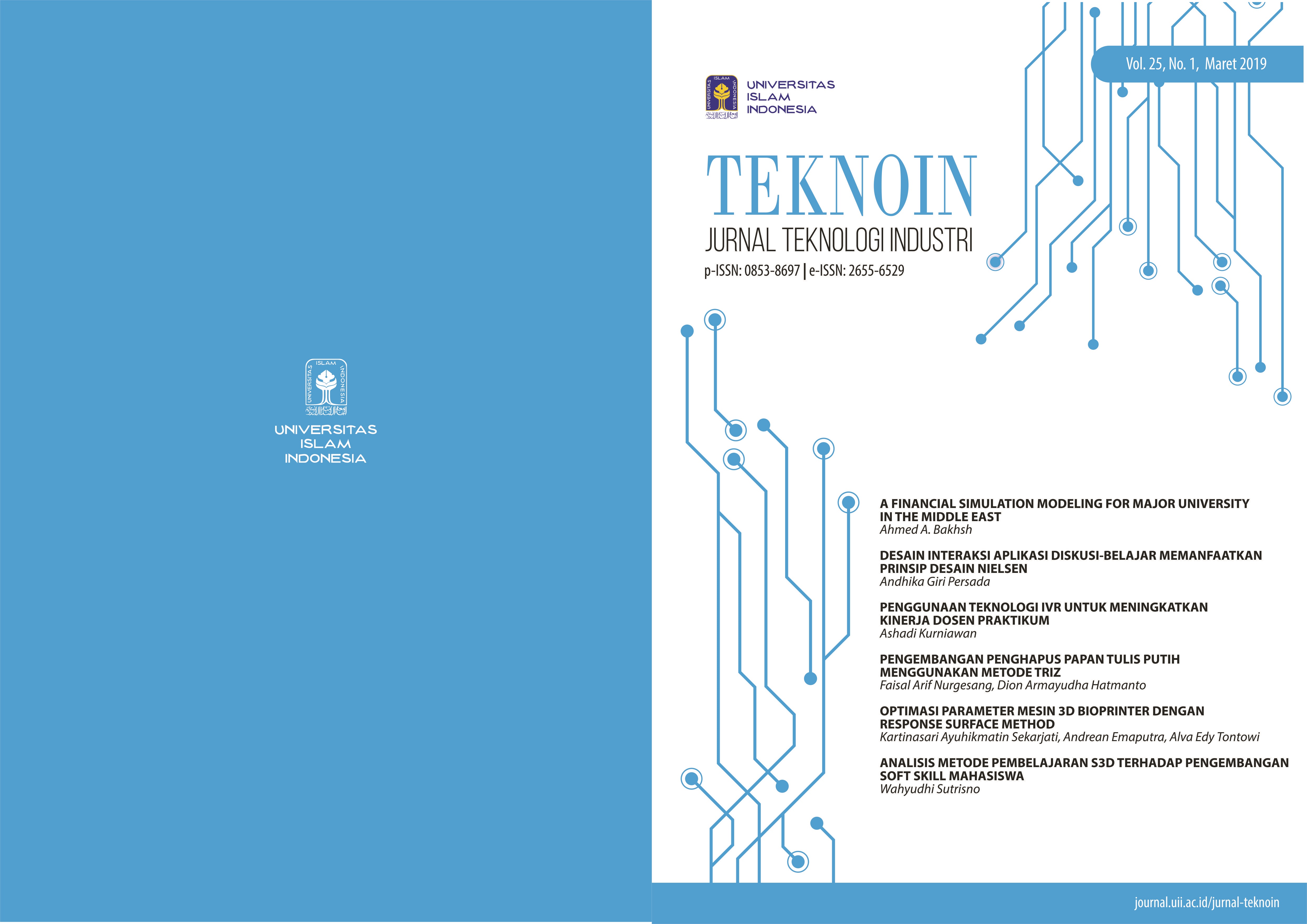Main Article Content
Abstract
This research uses material polymethylmethacrylate (PMMA) and hydroxyapatite (HA). The composition of PMMA: MMA is 1: 1 with the ratio composition of HA to PMMA powder is 0.50: 1 (w/w). The composition will be printed with a 3D Bioprinter that has 1.5 mm nozzle. The parameters of the 3D Bioprinter`s tested are perimeter speed with a range of 20 mm/s, 30 mm/s and 40 mm/s, infill speed with a range of 50 mm/s, 60 mm/s, and 70 mm/s, and fill density with a range of 40 mm/s, 50 mm/s and 60 mm/s. These parameters were optimized using response surface method with Minitab software 17. The design of specimens to be printed with a 3D Bioprinter machine using ASTM D638 Type 1. This design will be tested with dimensional measurement and tensile strength. The result of this study is indicated the optimal point at 31.15 mm/s for the perimeter speed`s parameter, 58.84 mm/s for the infill speed`s parameter and 64% for the fill density`s parameter. Dimension of the design is added with a scale of 1: 1.02 mm for length`s dimensions, 1: 1.08 mm for width`s dimensions, 1: 1.09 mm for narrow width`s dimensions and 1: 1.17 mm for thick`s dimensions.
Keywords
3D Bioprinter machine
polymethylmethacrylate (PMMA)
hydroxyapatite (HA)
perimeter speed
infill speed
fill density
response surface method
and dimensional measurement.
Article Details
License
Authors who publish with this journal agree to the following terms:
- Authors retain copyright and grant the journal right of first publication with the work simultaneously licensed under a Creative Commons Attribution License that allows others to share the work with an acknowledgement of the work's authorship and initial publication in this journal.
- Authors are able to enter into separate, additional contractual arrangements for the non-exclusive distribution of the journal's published version of the work (e.g., post it to an institutional repository or publish it in a book), with an acknowledgement of its initial publication in this journal.
- Authors are permitted and encouraged to post their work online (e.g., in institutional repositories or on their website) prior to and during the submission process, as it can lead to productive exchanges, as well as earlier and greater citation of published work (See The Effect of Open Access).
